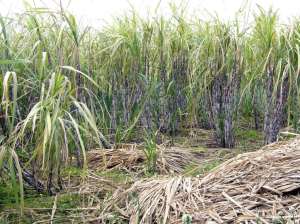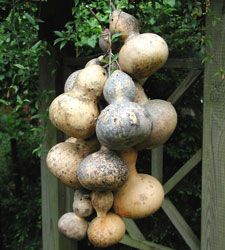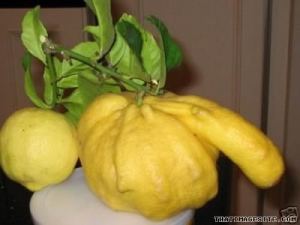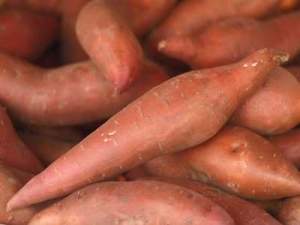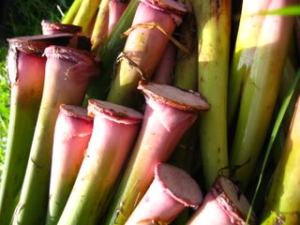


Pechay is an annual biennial herb. Its leaves are smooth, 30 cm long, broad at the tip narrowing gradually at the base extending downward to the upper end of its elongated, thick and whitish stalks. The leaves are erect, flowers are pale yellow.
In selecting an ideal sites, consider the following:
-Good water supply near the area.
-The fertility of the soil.
-Good drainage system during wet season.
-Windbreak and shade are available to prevent direct exposure to sunlight.
-Favorable climate for growth.
-Sufficient protection against farm animals.
Select a place not far from your house, easy for you to attend at all times. Pechay still need sunlight lightly for energy. It is important that there is a shade so that exposure to the sun is limited.
Pechay can be grown in any type of soil. The plants become more healthy to light, sandy-loam and well-drained soil with pH level of 5-4-6.7.
Pechay need climate with limited rainy season and short dry season not to exceed for 2 months. It can be grown by seeds. You can buy seeds at any farm supply.
Before sowing the seeds, see to it that the seeds you are using are quality seeds free from mixture of other varieties. It should be pure kind of one variety. That there should be no weed seeds mix to the variety you will use in planting. Further, it should be free from any seed-borne diseases.
Prepare seedbeds with measurement of 45 cm x 30 cm x 7.5 centimeters. For seedbed one meter wide x 5 meters long. You need a fertile and friable soil for the seeds. Mix 1 part of sand, 1 part of compost and one part garden soil. With a sand it provides drainage and aeration. Compost can increase soil texture and good fertility. Garden soil is good in root development.
In the event of rainy season, protect your seed-box or seedling from the rain. Construct a shade made of polyvinyl above the seed-box.
Sow thinly the seeds to shallow furrows. The use of paper pocket is an easy method to drop the seed evenly to the furrow. Cover the soil gently pressing them. This is to prevent seed exposure during watering.
The seed-box or seedbed should be watered 3 times a day to give enough moisture to the soil. Do this for the first 3 days. Seeds will germinate 4 to 7 days from the date of sowing. Regulate the degree of watering to avoid damping off and to have a sturdy seedlings.
If the seeds are sown thickly, prick the seedlings as true leaves begin to appear.This is to allow uniform, healthy and vigorous seedlings. Make sure that the distance and the depth of pricking must be uniformly done. Harden the seedling before transplanting to manage the stress of transplanting. Decrease the frequency of watering, expose seedlings to sunshine.
Plow the field thoroughly. Harrow it lengthwise and crosswise to make the soil loosen, friable and soft. You need to follow the field for 7 days. This is to allow the weeds to decompose and the new weeds to germinate. Then plow again. Harrow it crosswise to break the clods and bury the decomposing and new germinated seed. Plow for the 3rd time and harrow it again crosswise to level the field.
To keep the soil fertile in the field, mix manure, compost, organic matter and soil before plowing it. Water the seedlings of 40 grams of starter solution 15 teaspoons of complete fertilizer dissolved in a can of water enough for the mixing. Spray it to 5-square meter bed 5 to 7 days before transplanting.
Water the seed-boxes or seedbeds thoroughly a day before transplanting. The purpose for easy pulling of the seedling to minimize root injury that may cause the plant to wither.
Transplant the seedling anytime of the day. see to it that the beds of furrows should have enough water and irrigate adequately after the transplanting to ensure survival of the seedlings. It is better to do the transplanting in the late afternoon to reduce stress of transplanting. The age of the seedling before transplanting should be 9-12 days old.
Correct spacing is important in transplanting. A distance of 25 centimeters between hills and 90 centimeters between rows is the ideal spacing. Cover the transplant seedlings with enough soil to protect the roots. Press the soil around it and water the plants immediately. Each hole ready for transplanting should be poured with starter solution for the plants to grow healthy.
Pechay needs much water during its growing period. Water the plants early in the morning to prevent suncald. This is also to make the foliage dry before the night.
Use sprinkler in watering the plants. If the area is big enough to do the watering by using sprinkler, then do surface irrigation to the soil surface of the furrow. But it is too expensive while using sprinkler is easy to do, only it is laborious.
Use complete fertilizer (14-14-14) to give the plants enough nutrients. additionally apply the plants with organic fertilizer (animal manure and compost).
In one hectare, apply inorganic fertilizer at the rate of 240 kilograms of nitrogen, 60 kilograms of phosphorus, and 60 kilograms of potassium. Side-dress the plant with 120 kilograms of nitrogen a month after transplanting.
The purpose of plowing and harrowing several times is to loosen the soil and destroy the emerging weeds. Doing cultivation, it will aerates the soil and conserve moisture.
The purpose of thorough weeding is to control insects to harbor to the weeds. Weeds can also reduce the yield and quality of pechay. It will also compete with the plants in obtaining water, soil nutrients and lights.
Control weeds by hand weeding and mulching. Mulching materials to use are rice straw, rice hulls, sawdust spreading it to the ground around the plants or in between rows. Weeds can also be controlled by using herbicides. It is more efficient but also expensive.
Pechay can easily be attack by insects and other harmful pests by punching small holes to the leaves. It is a must to spray the plants with insecticides until ready to harvest. Schedule the spray once a week. Spray the leaves if dry. Do not spray the leaves 10 days before harvesting.
If attack by disease, use fungicides under recommended rate in the bottle. Harvest the plant 45 days after transplanting. Start your harvesting when there is enough vigorous leaves formed. Do it in the late afternoon to avoid wilting.
Separate the best crop and trim leaves. Do the bundling and packing. Wash pechay in the evening. You can transport pechay to the market at the early morning to have a good price.

 A tree of 5 meters tall armed with spikes of its branches. It has white flowers and leaves that are oblong.
A tree of 5 meters tall armed with spikes of its branches. It has white flowers and leaves that are oblong.